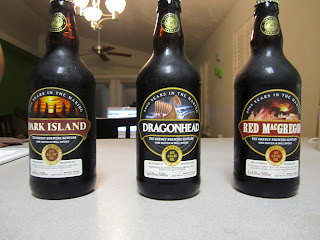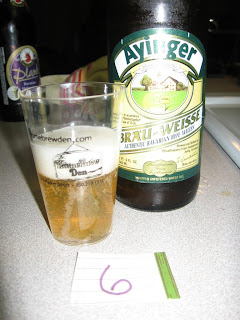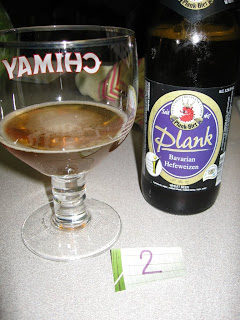
We're here with another round of highly attenuated beers this week with a Cream Ale (Anderson Valley Summer Solstice), a Munich
Helles (
Weihenstephaner Original) and a
Kölsch (Harpoon Summer Ale). Attenuation refers to the process when yeast consumes
fermentable sugar and converts into CO2 and alcohol. This doesn't always mean you'll get a higher alcoholic beer, however its safe to say the beer will be lighter in body and easy drinking.
BMC (Bud, Miller, Coors) have capitalized on easy drinking beers, but we're going to educate you on beers that actually have flavor and look sexier in a
koozie on the beach than
BMC.

Cream Ales have a lot of American history (which I'll spare you details) and were brewed in response to golden lagers taking the market. Breweries were interested in making a paler beer, lighter in body, sometimes even using corn since its cheaper. Ales tend to have a quicker turn-around time than lagers due to fermentation and also could be brewed during the warm months. Cream ales are sometimes referred to an "ale" version of
BMC. Take it as you may, some of the corn flavor may come through with some slight fruity flavors from the ale yeast. You don't see much of this style around.. Sam Adams,
Genesee? I don't see any indication why they're named Cream ales, maybe because they have a soft
mouthfeel and golden color yet sweet.
Munich
Helles Lagers are another low hopped but malty sweet light beer. Hops used tend to be noble German/UK hops that are more spicy/earthy than grassy/
citrusy that you'd taste in American beers.
Kölsch is a name that is protected in a Convention agreed by the Cologne Association of Brewers and the German Government fair-trade department which restricts the term to only be used by breweries in Cologne. What this means is don't go looking on the shelves for
Kölsch because you're probably wasting your time. There are exports we can find in America like
Reissdorf Kölsch (one of my favorite beers), however most will change the name to "Summer Ale" .. somehow Sam Adams has gotten away with naming theirs East/West
Kölsch yet I don't know how. If you're looking to try this style, here's the best reference (
http://beeradvocate.com/lists/style/85). Regardless, its a style you must try and from what I hear it just doesn't taste the same unless you've had to fresh from a brewery in Cologne. Anyways, we'll be trying it from my kitchen. The style is similar to the Munich
Helles with a soft body, low hop profile but also has a slight fruitiness from the ale yeast and can also be slightly sulfuric.
So the reviews:
Summer Solstice - Darker color, sweeter and fruitier, nutty taste reminiscent of praline ice cream, somebody got some whopper flavors in there. Then a canned corn finish, how bout that for a canned beer?
Weihenstephaner Original - Some champagne characteristics, light with lemon undertones, slight grapes, sweet, the ladies thought it smelled like a plant which is not a too distant cousin from hops ;)
Summer Ale - dry and more subtle flavor of the three, kinda boring actually, had the most head, slightly
bready taste, again the same scents as the Munich
Helles.
The verdict:
L - Summer Solstice,
Weihenstephaner, Summer Ale
A - Summer Solstice,
Weihenstephaner, Summer Ale
T- Summer Solstice,
Weihenstephaner, Summer Ale
K -
Weihenstephaner, Summer Solstice, Summer Ale
J -
Weihenstephaner, Summer Solstice, Summer Ale

The canned beer put up a good fight, and although they're totally different styles I was surprised it put up a fight. You can also find these in bottles along with several other varieties from Anderson Valley. Every time I crack one open the only way I can describe it is "
wtf in a can" because it has so many different flavors going on, some foreign.
I really can't talk good enough about
Weihenstephaner (the world's oldest brewery). Keep in mind we're reviewing their Original, however they also have a wheat
Hefeweizen which we reviewed way back. It tasted similar to the
Kölsch, except more flavorful and complex. If you're looking for a pretty easy to find
Kölsch, go for
Reissdorf.
















